Trigonometry Primer
1. Introduction
Trigonometry is everywhere and used in many branches of science and technology: geography, astronomy, electrical engineering, architecture, etc…
The basic concepts are presented here, mostly in pictures and a few formulas. Also, there is a short test at the end !
2. Unit of measure of angles
Two types of units are used for angles: radians and degrees. This is important to master fully and be able to easily go from one set of units to the other.
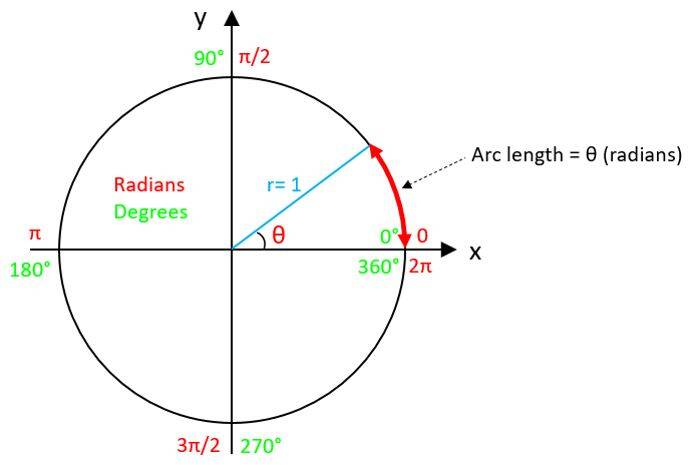
Angle θ in radians = length of the arc intercepted by the angle θ on the unit circle.
θ = 2π that corresponds to one full rotation on the unit circle, is the perimeter of the unit circle of radius of 1 (Perimeter = 2 π * Radius).
- π/2 radians ➜ 900
- π radians ➜ 1800
- 2π radians ➜ 3600
3. Sinus and cosinus formulas
Considering the rectangle triangle below:
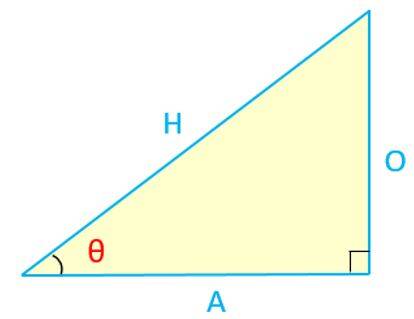
Sinus, cosinus and tangent formulas:
- Sin(θ) = O / H = Opposite / Hypotenuse
- Cos(θ) = A / H = Adjacent / Hypotenuse
- Tg(θ) = O / A = Opposite / Adjacent
Helpful mnemonic: SOH-CAH-TOA
4. Trigonometric circle
The trigonometric circle is an important tool to work with angles, for a clear understanding of the relationship to the trigonometric functions and periodicity:
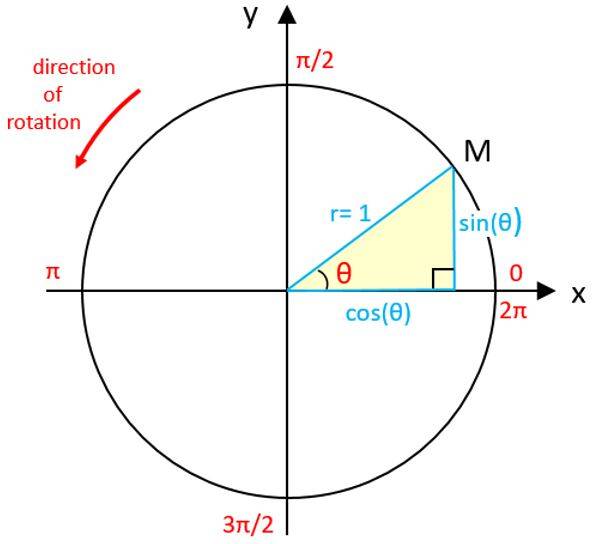
Notes:
- Point M coordinates: x = cos(θ), y = sin(θ)
- Equation of the unit cercle: x2 + y2 = 1
- Special case of Pythagora: sin2(θ) + cos2(θ) = 1
5. Trigonometric circle and Sinus function
How the trigonometric circle relates to the Sinus function graph:
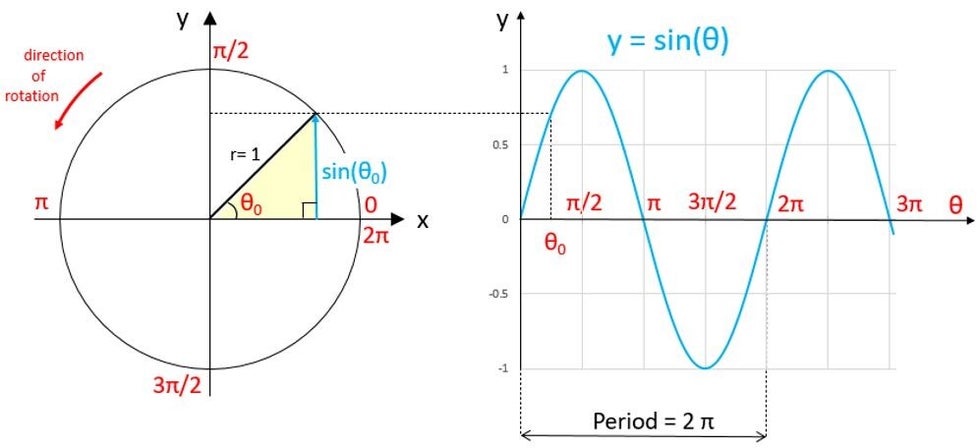
There is a similar figure for cosinus; compared to the sinus curve, cosinus is shifted by π/2 to the left.
6. Test yourself
Can you identify the following trigonometric functions curves ?
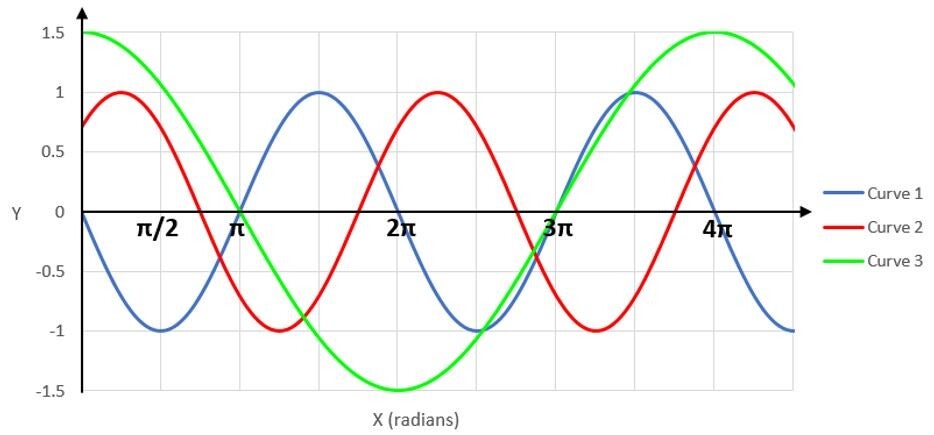
Solution:
Curve 1: - sin(x)
Curve 2: cos(x-π/4)
Curve 3: 1.5 cos(x/2)
Maak jouw eigen website met JouwWeb